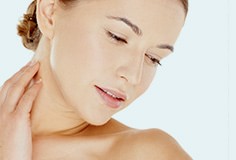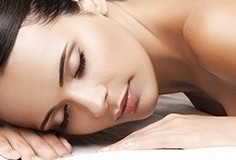Category: Sunscreen
The Sun’s Double-Edged Sword: Why Too Much Sun Exposure is Bad for Your Skin
Ah, the warmth of the sun on our skin – it feels like a blissful embrace from nature itself. But as much as we love basking in its glow, there’s a darker side to the sun’s rays that we often overlook: the damage they can inflict on our skin. Here’s why too much sun exposure is a recipe for trouble:
Premature Aging: UV rays from the sun are like silent saboteurs, quietly but steadily breaking down the collagen and elastin fibers in our skin. These proteins are essential for maintaining its firmness and elasticity. When they’re damaged, wrinkles, fine lines, and sagging skin become more prominent, giving rise to premature aging. So, if you’ve ever wondered why those sun-worshipping beach bums tend to look older than their years, now you know.
Sunburn: This one’s a no-brainer. Too much sun exposure can lead to sunburn, leaving your skin red, tender, and painfully sensitive to the touch. Sunburn is not only uncomfortable but also a sign that your skin has suffered damage from UV radiation. Over time, repeated sunburns can increase your risk of skin cancer.
Uneven Skin Tone: Ever noticed how your skin tends to develop dark spots and patches after spending too much time in the sun? That’s because UV radiation stimulates the production of melanin, the pigment responsible for giving your skin its color. While a tan might seem like a sign of health and vitality, it’s actually your skin’s way of trying to protect itself from further damage. Unfortunately, this self-defense mechanism can result in uneven skin tone and hyperpigmentation.
Skin Cancer: Last but certainly not least, excessive sun exposure is the leading cause of skin cancer. UV radiation damages the DNA in our skin cells, increasing the risk of mutations that can lead to cancerous growths. The most common types of skin cancer – basal cell carcinoma, squamous cell carcinoma, and melanoma – are all strongly associated with sun exposure. Protecting your skin from the sun is one of the most effective ways to reduce your risk of developing these potentially life-threatening conditions.
Despite the risks, there’s hope for sun-damaged skin. Advanced treatments like Fraxel laser, IPL (Intense Pulsed Light), Botox, and fillers such as Restylane and Juvederm can help rejuvenate and repair sun-damaged skin, restoring a youthful appearance and reversing some of the signs of aging. These procedures work by stimulating collagen production, reducing pigmentation, and smoothing out wrinkles and fine lines, helping you reclaim smooth, radiant skin.
So, what’s the takeaway from all this? Enjoying some sunshine is perfectly fine – in fact, it’s essential for our physical and mental well-being. But like most good things in life, moderation is key. Be mindful of how much time you spend in the sun, especially during peak hours when UV radiation is at its strongest. And always remember to protect your skin with sunscreen, protective clothing, and shade-seeking behavior. Your skin will thank you for it in the long run.
See you soon.
Avoiding Premature Aging: Unveiling Skin Care Habits to Embrace
The quest for timeless beauty often begins with the habits we cultivate daily. While many focus on skincare routines that promote a youthful glow, it’s equally crucial to be mindful of habits that may contribute to premature aging. Let’s review some common practices and discover the key to preserving your skin’s vitality without invasive measures.
Sun Neglect
One of the primary culprits behind premature aging is unprotected sun exposure. Skipping sunscreen or neglecting to reapply throughout the day exposes your skin to harmful UV rays, leading to fine lines, wrinkles, and uneven pigmentation. Embrace sun protection as a non-negotiable step in your skincare routine to shield your skin from the aging effects of the sun.
Inconsistent Hydration
The importance of staying hydrated goes beyond internal health; it significantly impacts your skin’s appearance. Inconsistent hydration can lead to a loss of skin elasticity, making fine lines more noticeable. Ensure your skincare routine includes a hydrating moisturizer to lock in moisture and maintain a supple, youthful complexion.
Sleeping with Makeup
The allure of a cozy bed after a long day tempts many to skip the makeup removal ritual. Sleeping with makeup can clog pores, contribute to breakouts, and hinder the skin’s natural renewal process. Embrace the nightly cleanse to allow your skin to breathe and regenerate, promoting a smoother, more radiant complexion.
Overlooking Antioxidants
Neglecting antioxidant-rich skincare can leave your skin vulnerable to environmental stressors. Antioxidants combat free radicals, preventing oxidative stress that accelerates aging. Integrate products with potent antioxidants like vitamin C into your routine to fortify your skin’s defense against premature aging.
Skimping on Sleep
In our fast-paced lives, adequate sleep often takes a backseat. However, quality sleep is when your skin undergoes crucial repair and regeneration. Chronic sleep deprivation can contribute to fine lines, dark circles, and a dull complexion. Prioritize restful sleep as a cornerstone of your anti-aging strategy.
Preserving youthful skin is a journey that extends beyond skincare products. By avoiding sun neglect, staying consistently hydrated, removing makeup nightly, incorporating antioxidants, and prioritizing quality sleep, you empower your skin to defy premature aging naturally. Embrace these age-conscious habits, and let your skin radiate with timeless vitality.
See you soon.
We Can’t Remind You Enough: Avoid the Sun
Tanned skin is damaged skin…and who wants that? Prolonged exposure to the sun can cause early wrinkling and brown spots, and it puts you at risk for skin cancer, too. While most of us enjoy being outside in the summer, not many of us really want to suffer the effects of sun damage. Staying safe while spending time outside is possible, though. The strategies just need to become a part of your daily routine.
Here are some simple ways to protect your skin:
- Stay indoors between 10am and 3pm, when the sun is most powerful. There are two types of rays: UVA rays cause aging and wrinkles and contribute to skin cancer. UVB rays cause sunburn and skin cancer.
- Go nowhere without sunscreen:
- More is better, so don’t scrimp. Make sure that it has a SPF of 30 or higher and it says “broad spectrum” on the label, which means that it will handle both UVA and UVB rays. Also, make sure it’s water-resistant and that you apply it all over your body 15 to 30 minutes before leaving the house.
- Use sunscreen even when it is cloudy outside, when you are driving in a car and inside a window. UVA rays penetrate clouds, glass and water.
- If you wear foundation, apply the sunscreen first and let it absorb before continuing with your makeup.
- Don’t forget the lip balm, SPF 15 or higher.
- Remember the tops of your ears, hairline, the “V” of your chest, nose, hands and tops of your feet. Eighty percent of skin cancer occurs on the head, neck and hands.
- Wear protective clothing: hats, sleeves and sunglasses. Dark, tightly woven fabrics provide more protection than lightly colored ones. Find hats that have protection built into them.
- Be aware that umbrellas and shade trees give only moderate protection from ultraviolet light. They don’t protect you from light that is reflected off of sand, snow, concrete and other surfaces.
- Avoid tanning oils. These essentially cook your skin.
- Be conscious of your medications. Certain medicines can make your skin extra sensitive to sun exposure, including tetracycline, diuretics and even herbal formulations such as St. John’s Wort.
Call us today to schedule your complimentary consultation. See you soon.
We Can’t Remind You Enough: Avoid The Sun
Tanned skin is damaged skin…and who wants that? Prolonged exposure to the sun can cause early wrinkling and brown spots, and it puts you at risk for skin cancer, too. While most of us enjoy being outside in the summer, not many of us really want to suffer the effects of sun damage. Staying safe while spending time outside is possible, though. The strategies just need to become a part of your daily routine.
Here are some simple ways to protect your skin:
- Stay indoors between 10am and 3pm, when the sun is most powerful. There are two types of rays: UVA rays cause aging and wrinkles and contribute to skin cancer. UVB rays cause sunburn and skin cancer.
- Go nowhere without sunscreen:
- More is better, so don’t scrimp. Make sure that it has a SPF of 30 or higher and it says “broad spectrum” on the label, which means that it will handle both UVA and UVB rays. Also, make sure it’s water-resistant and that you apply it all over your body 15 to 30 minutes before leaving the house.
- Use sunscreen even when it is cloudy outside, when you are driving in a car and inside a window. UVA rays penetrate clouds, glass and water.
- If you wear foundation, apply the sunscreen first and let it absorb before continuing with your makeup.
- Don’t forget the lip balm, SPF 15 or higher.
- Remember the tops of your ears, hairline, the “V” of your chest, nose, hands and tops of your feet. Eighty percent of skin cancer occurs on the head, neck and hands.
- Wear protective clothing: hats, sleeves and sunglasses. Dark, tightly woven fabrics provide more protection than lightly colored ones. Find hats that have protection built into them.
- Be aware that umbrellas and shade trees give only moderate protection from ultraviolet light. They don’t protect you from light that is reflected off of sand, snow, concrete and other surfaces.
- Avoid tanning oils. These essentially cook your skin.
- Be conscious of your medications. Certain medicines can make your skin extra sensitive to sun exposure, including tetracycline, diuretics and even herbal formulations such as St. John’s Wort.
Call us today to schedule your complimentary consultation.
Here Comes The Sun: Time To Get Ready
Living close to the beach requires discipline. That may seem like a strange statement, given how relaxed and casual the environment is here. But when it comes to your skin–and wrinkles, dark spots and melanoma–you need a serious regimen.
Now is the time to put your sun protection plan in place, if you haven’t done so already. It is easy to do if you simply make it part of your daily routine. Here is what I recommend:
Think 30: Every day, whether you are going to the beach or not, and even when it is cloudy, apply a moisturizer with an SPF of 30 or above. Use it on your face before you put on makeup and on the exposed parts of your body. You may choose a moisturizer formulated specifically for the face and another just for your body, or you may use the same for both. If you are at the beach, where the rays are intensified, remember to reapply after two hours or after swimming or perspiring.
Search for Shade: Sun damage is cumulative, so every minute spent out of dangerous rays will help your skin stay young-looking and healthy. So, avoid the sun when you can, at all costs–cross to the shady side of the street, sit under the umbrella on the restaurant patio, carry an umbrella in your purse.
Beware the Bewitching Hours: The sun is strongest between 10 am and 2 pm, so do what you can to avoid it during this time.
Hats On: Go for a wide brim, and make sure that it covers the back of your neck, too. Make wearing other protective clothing a habit, too, such as sunglasses and long sleeves. Keep a basket of summer sun gear in your car, as you would a fleece throw in the winter.
As always, if you have any questions or concerns, we’ll be happy to help you look and feel your best.
Stop the Squinting: Be Smart About the Sun
Herewith, a crash course in U’s and V’s…or, in other words, how sunny is it and what do I need to do about it?
The Ultraviolet index is a measurement of the strength of UV radiation at a particular time and place. It’s a standard scale used around the globe, with a range of 0 to 11.
- 0-2: This is considered low danger, but the Environmental Protection Agency recommends sunglasses and broad spectrum SPF 30+ protection. Also, avoid bright surfaces (sand, water) that can reflect and intensify UV rays.
- 3-5: Moderate danger. Seek shade during the height of the sun, at midday. Wear protective clothing, hat, sunscreen if outdoors, and reapply sunscreen every two hours.
- 6-7: High risk. Reduce time in the sun between 10 a.m. and 4 p.m. Follow protective measures as above.
- 8-10: Very high risk. Follow above.
- 11+: Extreme. Avoid the sun or if you have to be outside, follow the above.
As we know, prolonged exposure to the sun can cause early wrinkling and brown spots, and puts you at risk for skin cancer. While most of us enjoy being outside in the summer, not many of us really want to have old-looking skin, or illness. Staying safe while spending time in the sun is an easy thing to do. It may just require a little extra awareness and preparation on your part. Remember, tanned skin is damaged skin…and who wants that.
Here is some more specific information for protecting your skin and keeping you looking young, beautiful and healthy, particularly when the UV rays are at their most dangerous.
- Stay indoors between 10 a.m. and 3 p.m., when the burning rays of the sun are at their height. There are two types: UVA rays cause aging and wrinkles and contribute to skin cancer. UVB rays cause sunburn and skin cancer.
- Go nowhere without sunscreen:
- More is better, so don’t scrimp. Make sure that it has a SPF of 30 or higher and it says “broad spectrum” on the label, which means that it will handle both UVA and UVB rays. Also, be sure that it is water-resistant, and that you apply it all over your body 15 to 30 minutes before leaving the house.
- Use sunscreen even when it is cloudy outside, when you are driving in a car and inside a window. UVA rays penetrate clouds, glass and water, so when you’re swimming, make sure to apply plenty of waterproof sunscreen.
- If you wear foundation, apply the sunscreen first and let it absorb before continuing with your makeup.
- Don’t forget the lip balm. SPF 15 or more is best.
- And, don’t forget the tops of your ears, hairline, the “V” of your chest, nose, hands and tops of your feet. Eighty percent of skin cancer occurs on the head, neck and hands.
- Wear protective clothing, including hats, sleeves and sunglasses. Dark, tightly woven fabrics provide more protection than lightly colored ones.
- Be aware that umbrellas and shade trees do only so much. They give moderate protection from ultraviolet light, and they don’t protect you from light that is reflected off of sand, snow, concrete and other surfaces.
- Avoid tanning oils. These essentially cook your skin.
- Be conscious of your medications. Certain medicines can make your skin extra sensitive to sun exposure, including tetracycline, diuretics and even herbal formulations such as St. John’s Wort.
If you suspect that you have sun damage, call our office to schedule a complimentary consultation. We’ll suggest specific treatments that can help to minimize the appearance of wrinkles and brown spots.
See you soon.
We Can’t Remind You Enough: Avoid The Sun
Tanned skin is damaged skin…and who wants that? Prolonged exposure to the sun can cause early wrinkling and brown spots, and it puts you at risk for skin cancer, too. While most of us enjoy being outside in the summer, not many of us really want to suffer the effects of sun damage. Staying safe while spending time outside is possible, though. The strategies just need to become a part of your daily routine.
Here are some simple ways to protect your skin:
- Stay indoors between 10am and 3pm, when the sun is most powerful. There are two types of rays: UVA rays cause aging and wrinkles and contribute to skin cancer. UVB rays cause sunburn and skin cancer.
- Go nowhere without sunscreen:
- More is better, so don’t scrimp. Make sure that it has a SPF of 30 or higher and it says “broad spectrum” on the label, which means that it will handle both UVA and UVB rays. Also, make sure it’s water-resistant and that you apply it all over your body 15 to 30 minutes before leaving the house.
- Use sunscreen even when it is cloudy outside, when you are driving in a car and inside a window. UVA rays penetrate clouds, glass and water.
- If you wear foundation, apply the sunscreen first and let it absorb before continuing with your makeup.
- Don’t forget the lip balm, SPF 15 or higher.
- Remember the tops of your ears, hairline, the “V” of your chest, nose, hands and tops of your feet. Eighty percent of skin cancer occurs on the head, neck and hands.
- Wear protective clothing: hats, sleeves and sunglasses. Dark, tightly woven fabrics provide more protection than lightly colored ones. Find hats that have protection built into them.
- Be aware that umbrellas and shade trees give only moderate protection from ultraviolet light. They don’t protect you from light that is reflected off of sand, snow, concrete and other surfaces.
- Avoid tanning oils. These essentially cook your skin.
- Be conscious of your medications. Certain medicines can make your skin extra sensitive to sun exposure, including tetracycline, diuretics and even herbal formulations such as St. John’s Wort.
Call us today to schedule your complimentary consultation. See you soon.
Midsummer’s Day Dream
Close your eyes and think of one thing about your appearance that you’d like to change. I bet that there is something, since most everybody has a wish list of some kind. The exciting news is that your day dream can probably be a reality.
Whether it is the hollowing of your cheeks that has occurred in the last year or so, or the double chin that persists despite your highly toned body, or those pockets of fat that just won’t go away despite your dieting and exercise, we have solutions that will fulfill your wishes for how you want to look.
Not too long ago, you couldn’t fill lost volume with Restylane, Perlane or Voluma. Or minimize submental fat under your chin with Kybella or eradicate actual fat cells with SmartLipo Triplex. In recent years, cosmetic treatments have given you the opportunity to restore your youthful appearance, appear rested and refreshed and feel simply great about yourself.
So, as summer hits its stride, why not dream a little? It’s a great season to wish for what you want.
Call our office today to schedule a complimentary consultation. We’ll talk about your specific wants and desires and help plan a course to satisfy them as best we can.
Meantime, remember the sunscreen.
See you soon.
Stop the Squinting: Be Smart About the Sun
Herewith, a crash course in U’s and V’s…or, in other words, how sunny is it and what do I need to do about it?
The Ultraviolet index is a measurement of the strength of UV radiation at a particular time and place. It’s a standard scale used around the globe, with a range of 0 to 11.
*0-2: This is considered low danger, but the Environmental Protection Agency recommends sunglasses and broad spectrum SPF 30+ protection. Also, avoid bright surfaces (sand, water) that can reflect and intensify UV rays.
*3-5: Moderate danger. Seek shade during the height of the sun, at midday. Wear protective clothing, hat, sunscreen if outdoors, and reapply sunscreen every two hours.
*6-7: High risk. Reduce time in the sun between 10 a.m. and 4 p.m. Follow protective measures as above.
*8-10: Very high risk. Follow above.
*11+: Extreme. Avoid the sun or if you have to be outside, follow the above.
As we know, prolonged exposure to the sun can cause early wrinkling and brown spots, and puts you at risk for skin cancer. While most of us enjoy being outside in the summer, not many of us really want to have old-looking skin, or illness. Staying safe while spending time in the sun is an easy thing to do. It may just require a little extra awareness and preparation on your part. Remember, tanned skin is damaged skin…and who wants that.
Here is some more specific information for protecting your skin and keeping you looking young, beautiful and healthy, particularly when the UV rays are at their most dangerous.
- Stay indoors between 10 a.m. and 3 p.m., when the burning rays of the sun are at their height. There are two types: UVA rays cause aging and wrinkles and contribute to skin cancer. UVB rays cause sunburn and skin cancer.
- Go nowhere without sunscreen:
- More is better, so don’t scrimp. Make sure that it has a SPF of 30 or higher and it says “broad spectrum” on the label, which means that it will handle both UVA and UVB rays. Also, be sure that it is water-resistant, and that you apply it all over your body 15 to 30 minutes before leaving the house.
- Use sunscreen even when it is cloudy outside, when you are driving in a car and inside a window. UVA rays penetrate clouds, glass and water, so when you’re swimming, make sure to apply plenty of waterproof sunscreen.
- If you wear foundation, apply the sunscreen first and let it absorb before continuing with your makeup.
- Don’t forget the lip balm. SPF 15 or more is best.
- And, don’t forget the tops of your ears, hairline, the “V” of your chest, nose, hands and tops of your feet. Eighty percent of skin cancer occurs on the head, neck and hands.
- Wear protective clothing, including hats, sleeves and sunglasses. Dark, tightly woven fabrics provide more protection than lightly colored ones.
- Be aware that umbrellas and shade trees do only so much. They give moderate protection from ultraviolet light, and they don’t protect you from light that is reflected off of sand, snow, concrete and other surfaces.
- Avoid tanning oils. These essentially cook your skin.
- Be conscious of your medications. Certain medicines can make your skin extra sensitive to sun exposure, including tetracycline, diuretics and even herbal formulations such as St. John’s Wort.
If you suspect that you have sun damage, call our office to schedule a complimentary consultation. We’ll suggest specific treatments that can help to minimize the appearance of wrinkles and brown spots.
See you soon.








